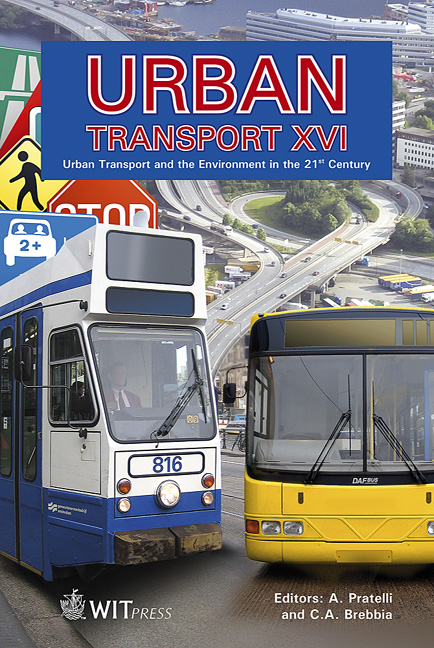Design Of Urban Public Transport Lines As A Multiple Criteria Optimisation Problem
Price
Free (open access)
Transaction
Volume
111
Pages
10
Page Range
137 - 146
Published
2010
Size
338 kb
Paper DOI
10.2495/UT100131
Copyright
WIT Press
Author(s)
Ľ. Jánošíková, M. Blatoň & D. Teichmann
Abstract
The paper describes a mathematical programming approach used for the lineplanning problem in urban public transport. The input data include the transportation network in a city, O-D matrix of travel demand, and the set of available vehicles of specified transportation modes and types. The goal of line planning is to design the routes of lines and their frequencies. Supposing an initial set of lines has been proposed, the line-planning problem is formulated and solved as a multiple criteria optimisation problem, where the criteria reflect the travellers’ demand for a high quality service, the operator’s interest in an effective service, and the environmental impact of the vehicles. The solution to this problem specifies the number of vehicles of the given mode and type operating on the lines. Lines, which are not assigned a vehicle, will not operate. At the same time, the solution specifies optimal passenger routes in the line network. Then an iterative process follows which computes new line frequencies using a discrete choice model to respect passengers’ behaviour when they have multiple travel alternatives. Keywords: line-planning problem, mathematical programming, multiple criteria optimisation, discrete choice model. 1 Introduction Design of urban public transport lines should be addressed in the context of public transport planning process, which consists of five stages [3]:
Keywords
line-planning problem, mathematical programming, multiple criteria optimisation, discrete choice model





